-
 Bitcoin
Bitcoin $105,953.9980
3.06% -
 Ethereum
Ethereum $2,445.3292
6.68% -
 Tether USDt
Tether USDt $1.0006
-0.03% -
 XRP
XRP $2.1968
7.03% -
 BNB
BNB $643.2903
2.13% -
 Solana
Solana $144.2799
3.82% -
 USDC
USDC $1.0000
-0.03% -
 TRON
TRON $0.2739
0.49% -
 Dogecoin
Dogecoin $0.1642
4.47% -
 Cardano
Cardano $0.5834
5.49% -
 Hyperliquid
Hyperliquid $38.0741
2.80% -
 Sui
Sui $2.7741
7.56% -
 Chainlink
Chainlink $13.4107
11.26% -
 Bitcoin Cash
Bitcoin Cash $450.4828
-0.61% -
 UNUS SED LEO
UNUS SED LEO $9.1301
0.64% -
 Stellar
Stellar $0.2476
5.49% -
 Avalanche
Avalanche $18.0637
5.09% -
 Toncoin
Toncoin $2.9066
2.43% -
 Shiba Inu
Shiba Inu $0.0...01160
4.01% -
 Hedera
Hedera $0.1527
8.00% -
 Litecoin
Litecoin $84.6122
2.37% -
 Monero
Monero $317.6076
5.76% -
 Ethena USDe
Ethena USDe $1.0008
0.02% -
 Polkadot
Polkadot $3.4519
5.27% -
 Dai
Dai $1.0000
-0.03% -
 Bitget Token
Bitget Token $4.2835
5.62% -
 Uniswap
Uniswap $7.0443
9.78% -
 Pepe
Pepe $0.0...09964
7.41% -
 Pi
Pi $0.5391
4.64% -
 Aave
Aave $264.1743
11.26%
What is WMA? How is it different from a simple moving average?
WMA assigns higher weights to recent data, making it more responsive than SMA; useful for quick trading decisions in volatile crypto markets.
May 23, 2025 at 10:28 pm
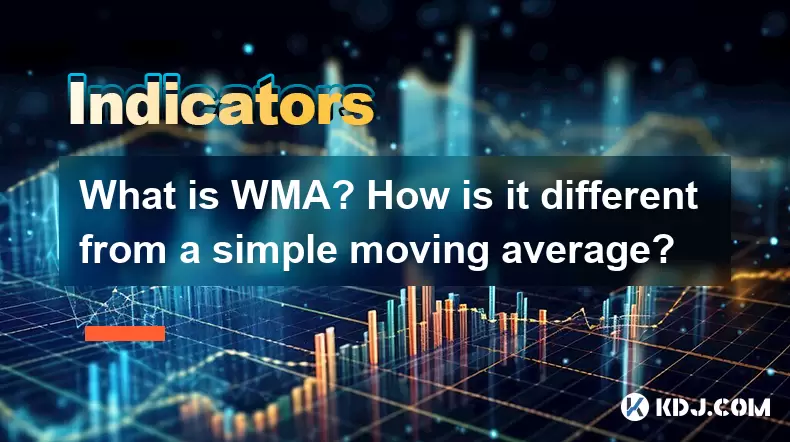
What is WMA?
Weighted Moving Average (WMA) is a type of moving average that assigns a higher weighting to more recent data points, making it more responsive to new information compared to a Simple Moving Average (SMA). In the context of cryptocurrency trading, WMA can be particularly useful for traders looking to make quicker decisions based on recent price movements.
The calculation of WMA involves multiplying each data point by a weight that decreases linearly from the most recent to the oldest data point. The sum of these weighted values is then divided by the sum of the weights. This method ensures that the most recent data points have a greater influence on the average, which can help traders identify trends more rapidly.
How is WMA Calculated?
To understand how WMA is calculated, consider a set of closing prices over a specific period. Let's assume we are using a 5-day WMA. The formula for WMA is:
[ \text{WMA} = \frac{\sum (P_i \times W_i)}{\sum W_i} ]
Where:
- ( P_i ) is the price at time ( i )
- ( W_i ) is the weight assigned to the price at time ( i )
For a 5-day WMA, the weights would be assigned as follows:
- Day 5 (most recent): 5
- Day 4: 4
- Day 3: 3
- Day 2: 2
- Day 1 (oldest): 1
The sum of the weights is ( 5 + 4 + 3 + 2 + 1 = 15 ). If the closing prices for these five days are $10, $12, $14, $16, and $18 respectively, the WMA would be calculated as:
[ \text{WMA} = \frac{(18 \times 5) + (16 \times 4) + (14 \times 3) + (12 \times 2) + (10 \times 1)}{15} ]
[ \text{WMA} = \frac{90 + 64 + 42 + 24 + 10}{15} ]
[ \text{WMA} = \frac{230}{15} ]
[ \text{WMA} = 15.33 ]
How is WMA Different from a Simple Moving Average?
Simple Moving Average (SMA), on the other hand, assigns equal weight to all data points within the chosen period. This means that the oldest data point has the same impact on the average as the most recent data point. The formula for SMA is:
[ \text{SMA} = \frac{\sum P_i}{n} ]
Where:
- ( P_i ) is the price at time ( i )
- ( n ) is the number of periods
Using the same example of five days with closing prices of $10, $12, $14, $16, and $18, the SMA would be calculated as:
[ \text{SMA} = \frac{10 + 12 + 14 + 16 + 18}{5} ]
[ \text{SMA} = \frac{70}{5} ]
[ \text{SMA} = 14 ]
The key difference between WMA and SMA is the weighting of the data points. WMA gives more importance to recent data, which can lead to a more sensitive indicator that reacts faster to price changes. In contrast, SMA provides a smoother, more stable average because it treats all data points equally.
Advantages of Using WMA in Cryptocurrency Trading
In the volatile world of cryptocurrency, WMA can be a valuable tool for traders. Its sensitivity to recent price movements allows traders to identify trends and potential reversals more quickly. This can be particularly useful in short-term trading strategies where quick decision-making is crucial.
For example, if a cryptocurrency's price is showing a bullish trend and the WMA starts to rise more sharply than the SMA, it could indicate increasing momentum. Traders might use this signal to enter a long position, expecting further price increases.
Disadvantages of Using WMA
While WMA can be beneficial, it also has its drawbacks. The increased sensitivity to recent data can lead to more false signals, especially in a market known for its volatility. Traders might find themselves reacting to short-term fluctuations that do not necessarily reflect the overall trend.
Additionally, the complexity of calculating WMA compared to SMA might deter some traders. While modern trading platforms often include WMA as a built-in indicator, understanding how it is calculated can be more challenging than the straightforward approach of SMA.
How to Implement WMA in Trading Platforms
Implementing WMA in trading platforms is relatively straightforward. Here is a step-by-step guide on how to do it using a popular platform like TradingView:
- Open TradingView: Navigate to the TradingView website and log into your account.
- Select a Cryptocurrency Chart: Choose the cryptocurrency you wish to analyze and open its chart.
- Add WMA Indicator: Click on the "Indicators" button at the top of the chart. In the search bar, type "Weighted Moving Average" and select the WMA indicator from the list.
- Adjust Settings: You can adjust the period length of the WMA to suit your trading strategy. For example, you might choose a 10-day WMA for short-term analysis or a 50-day WMA for longer-term trends.
- Analyze the Chart: Once the WMA is applied, observe how it interacts with the price action. Look for crossovers, divergences, and other signals that might inform your trading decisions.
Practical Example of Using WMA in Cryptocurrency Trading
To illustrate how WMA can be used in practice, consider a scenario where a trader is monitoring Bitcoin (BTC). The trader notices that the 10-day WMA is starting to rise more sharply than the 50-day SMA, indicating increasing short-term momentum.
- Identify the Signal: The trader observes that the 10-day WMA has crossed above the 50-day SMA, suggesting a potential bullish trend.
- Confirm with Other Indicators: The trader might look at other indicators such as the Relative Strength Index (RSI) or the Moving Average Convergence Divergence (MACD) to confirm the bullish signal.
- Execute the Trade: Based on the confirmed signal, the trader decides to enter a long position on BTC, expecting the price to continue rising.
- Monitor and Adjust: The trader continues to monitor the WMA and other indicators, ready to adjust the position if the trend shows signs of reversing.
Frequently Asked Questions
Q: Can WMA be used in combination with other technical indicators?
A: Yes, WMA can be effectively used in conjunction with other technical indicators to enhance trading strategies. For instance, combining WMA with the RSI can help traders confirm trend signals and identify potential overbought or oversold conditions.
Q: How does the choice of period length affect the WMA?
A: The period length of the WMA significantly impacts its sensitivity. A shorter period length, such as a 10-day WMA, will be more responsive to recent price changes, while a longer period length, like a 50-day WMA, will provide a smoother, less reactive average.
Q: Is WMA more suitable for certain types of trading strategies?
A: WMA is particularly useful for short-term trading strategies where quick reactions to price changes are necessary. However, it can also be used in longer-term strategies to identify major trends, though with less sensitivity than in short-term applications.
Q: How do I know if the WMA is giving a false signal?
A: To determine if the WMA is giving a false signal, traders should look for confirmation from other indicators and analyze the broader market context. If the WMA signal contradicts other indicators or the overall trend, it might be a false signal. Additionally, monitoring the volume and market sentiment can provide further insights.
Disclaimer:info@kdj.com
The information provided is not trading advice. kdj.com does not assume any responsibility for any investments made based on the information provided in this article. Cryptocurrencies are highly volatile and it is highly recommended that you invest with caution after thorough research!
If you believe that the content used on this website infringes your copyright, please contact us immediately (info@kdj.com) and we will delete it promptly.
- BlockDAG: The Cryptocurrency ROI Revolution
- 2025-06-25 06:45:12
- Layer 1 Crypto Token Presales: What's Hot in the NYC Crypto Scene?
- 2025-06-25 06:30:12
- Ethereum, Investors, and Memecoins: A Wild Ride on the Crypto Coaster
- 2025-06-25 06:30:12
- SEI Price Explodes: Is This Just the Beginning?
- 2025-06-25 07:05:13
- Meme Coins Mania: Arctic Pablo and the Hunt for Presale Gains
- 2025-06-25 06:50:13
- Mark Cuban, Meme Coins, and Scams: A Cautionary Tale
- 2025-06-25 07:05:13
Related knowledge
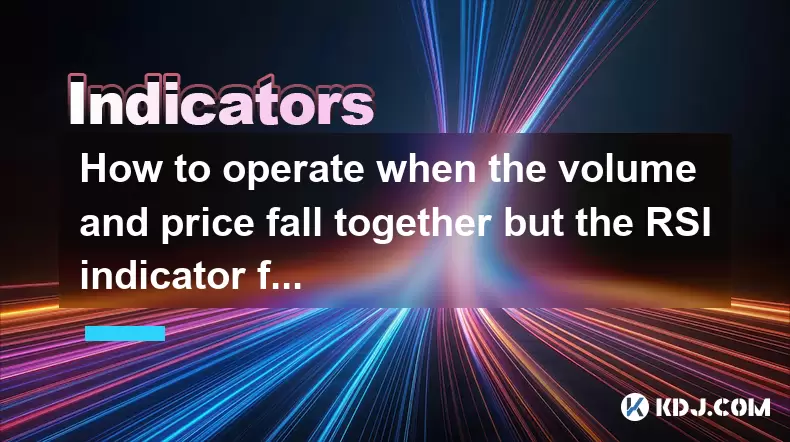
How to operate when the volume and price fall together but the RSI indicator forms a bottom divergence?
Jun 25,2025 at 04:29am
Understanding the Concept of RSI Bottom DivergenceWhen analyzing cryptocurrency price charts, traders often rely on technical indicators to spot potential reversals. One such signal is a bottom divergence in the Relative Strength Index (RSI). This occurs when the price makes a new low, but the RSI does not confirm that low and instead forms a higher low...
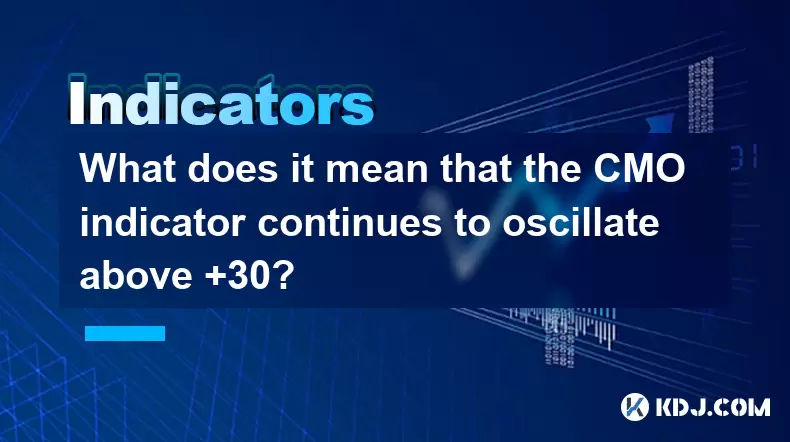
What does it mean that the CMO indicator continues to oscillate above +30?
Jun 25,2025 at 03:29am
Understanding the CMO IndicatorThe Chande Momentum Oscillator (CMO) is a technical analysis tool developed by Tushar Chande to measure momentum in financial markets. In cryptocurrency trading, the CMO helps traders identify overbought or oversold conditions and potential trend reversals. The oscillator ranges from -100 to +100, with values above zero in...

What does it mean that the ATR indicator suddenly doubles after hitting a new low this year?
Jun 24,2025 at 11:57pm
Understanding the ATR IndicatorThe Average True Range (ATR) is a technical analysis indicator used to measure market volatility. Developed by J. Welles Wilder, ATR calculates the average price range between a security’s high and low over a specific period—typically 14 periods. It does not indicate the direction of price movement but rather how volatile ...
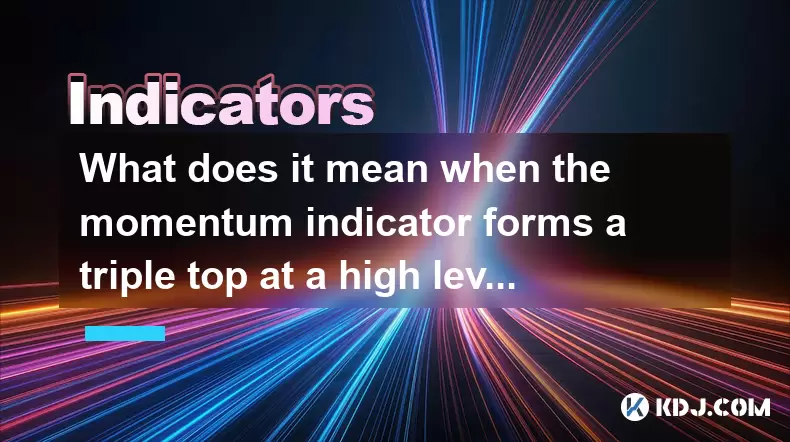
What does it mean when the momentum indicator forms a triple top at a high level?
Jun 25,2025 at 03:15am
Understanding the Momentum Indicator in Cryptocurrency TradingThe momentum indicator is a widely used technical analysis tool that measures the rate of change in price movements over a specified period. In cryptocurrency trading, where volatility is high and trends can reverse rapidly, this indicator helps traders identify potential trend reversals or c...
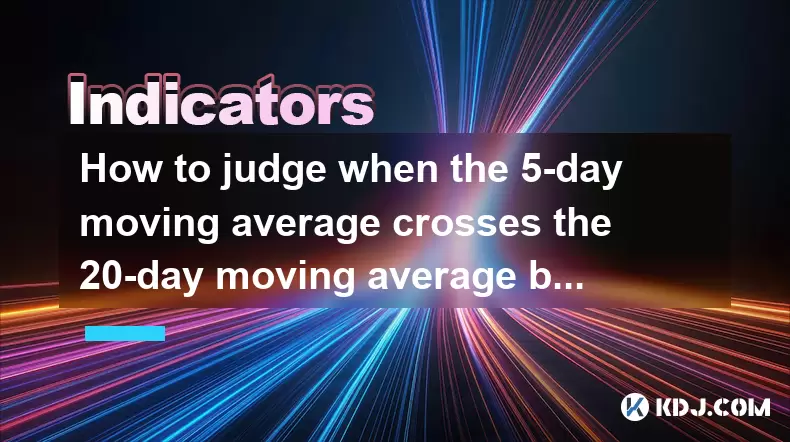
How to judge when the 5-day moving average crosses the 20-day moving average but the RSI shows a top divergence?
Jun 25,2025 at 06:28am
Understanding the Basics of Moving Averages and RSIIn technical analysis, moving averages are essential tools used to identify trends in price movements. The 5-day moving average (MA) is a short-term indicator that reflects recent price action, while the 20-day MA offers a broader perspective over a longer period. When these two lines intersect, it's kn...
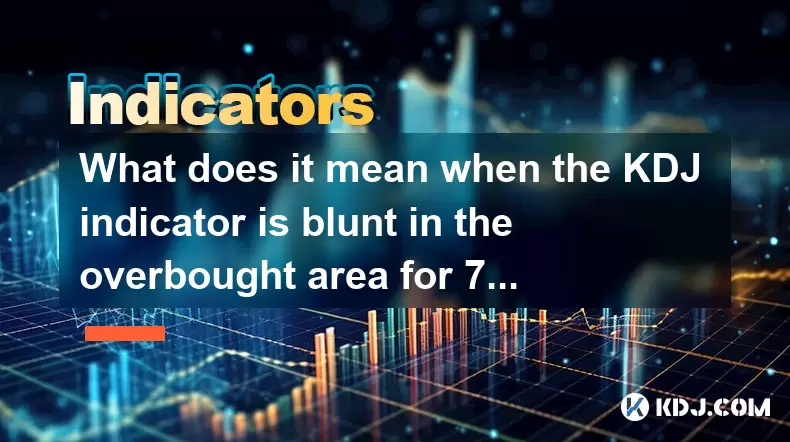
What does it mean when the KDJ indicator is blunt in the overbought area for 7 consecutive trading days?
Jun 25,2025 at 08:21am
Understanding the KDJ Indicator in Cryptocurrency TradingThe KDJ indicator, also known as the stochastic oscillator, is a momentum-based technical analysis tool widely used in cryptocurrency trading. It consists of three lines: the %K line (fast stochastic), the %D line (slow stochastic), and the %J line (which reflects the divergence between %K and %D)...

How to operate when the volume and price fall together but the RSI indicator forms a bottom divergence?
Jun 25,2025 at 04:29am
Understanding the Concept of RSI Bottom DivergenceWhen analyzing cryptocurrency price charts, traders often rely on technical indicators to spot potential reversals. One such signal is a bottom divergence in the Relative Strength Index (RSI). This occurs when the price makes a new low, but the RSI does not confirm that low and instead forms a higher low...

What does it mean that the CMO indicator continues to oscillate above +30?
Jun 25,2025 at 03:29am
Understanding the CMO IndicatorThe Chande Momentum Oscillator (CMO) is a technical analysis tool developed by Tushar Chande to measure momentum in financial markets. In cryptocurrency trading, the CMO helps traders identify overbought or oversold conditions and potential trend reversals. The oscillator ranges from -100 to +100, with values above zero in...

What does it mean that the ATR indicator suddenly doubles after hitting a new low this year?
Jun 24,2025 at 11:57pm
Understanding the ATR IndicatorThe Average True Range (ATR) is a technical analysis indicator used to measure market volatility. Developed by J. Welles Wilder, ATR calculates the average price range between a security’s high and low over a specific period—typically 14 periods. It does not indicate the direction of price movement but rather how volatile ...

What does it mean when the momentum indicator forms a triple top at a high level?
Jun 25,2025 at 03:15am
Understanding the Momentum Indicator in Cryptocurrency TradingThe momentum indicator is a widely used technical analysis tool that measures the rate of change in price movements over a specified period. In cryptocurrency trading, where volatility is high and trends can reverse rapidly, this indicator helps traders identify potential trend reversals or c...

How to judge when the 5-day moving average crosses the 20-day moving average but the RSI shows a top divergence?
Jun 25,2025 at 06:28am
Understanding the Basics of Moving Averages and RSIIn technical analysis, moving averages are essential tools used to identify trends in price movements. The 5-day moving average (MA) is a short-term indicator that reflects recent price action, while the 20-day MA offers a broader perspective over a longer period. When these two lines intersect, it's kn...

What does it mean when the KDJ indicator is blunt in the overbought area for 7 consecutive trading days?
Jun 25,2025 at 08:21am
Understanding the KDJ Indicator in Cryptocurrency TradingThe KDJ indicator, also known as the stochastic oscillator, is a momentum-based technical analysis tool widely used in cryptocurrency trading. It consists of three lines: the %K line (fast stochastic), the %D line (slow stochastic), and the %J line (which reflects the divergence between %K and %D)...
See all articles
























































































